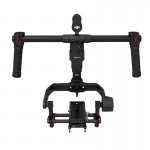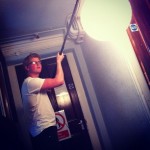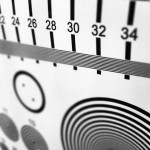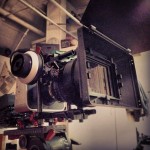Field Induced Polymer Electro-Luminenscence or FIPEL technology, is something film makers and video production crew could be using within the next year to create better looking images more safely and efficiently.
It’s been around for a decade or so, but recently some brilliant scientists (Dr. David L. Carroll specifically, I gather) have figured out how to make FIPEL devices five times more efficient. Apparently they use the standard fac tris iridium doped poly-vinyl-carbazole, and they compound it with multi-walled carbon nanotubes. Nanotubes are probably best known for their axial strength, about 300 times as strong as steel per unit weight, but their electrical properties may well be what they are remembered for in the years to come.
Unlike LEDs (Light Emitting Diodes) which use DC current, FIPELs produce light using an AC induced electric field, just like common fluorescents, but without the need for a ballast. No buzz, and no flicker. You could think of them as a cross between Organic LEDs (like AMOLED phone screens) and fluorescents, with the best of both worlds.
Efficiency
We’re talking a range between twice as efficient as compact fluorescents, right up to LED efficiency. According to the scientist who developed the technology, they produce light without generating any heat.
Durability
The light emitting part is a polymer. That’s plastic to you and me. They are flexible and can be made in any shape. No glass means no replacement when you drop/hit one of these lamps.
Longetivy
The trouble with organic electronics is usually longevity. The organic part gets used up after a while. The way these FIPEL lamps slow down this process is once again down to the nanotubes.
Vague science: They allow a higher current density at the emissive layer, which increases the number of Iridium triplet-triplet annihilations, which produces more light and prevents the scavenger triplets from slowly altering the structure of the FIPEL device over time.
Friendly version: Dr. Carroll apparently made one FIPEL light which lasted him 10 years. Win.
Spectrum
This is essentially why film makers will love them. The FIPEL lamps can be tuned to emit light at a chosen colour temperature. No filters, no green/blue colour cast. They can actually be made to emit whatever spectrum you’d like. The scientists claim to be able to match the spectrum of the Sun. In one interview, Carroll states “It is a continuous spectrum.” Wow. A full spectrum to work with when colour grading would be an absolute dream. The problem with LEDs is usually their spectral continuity. They’re usually blue emitters with yellow producing phosphors. This means when you’re trying to colour grade a person’s skin, there is no red colour information captured by the camera and it is often impossible to make somebody look warm and happy. With a FIPEL sun spectrum lighting your scene, there would be plenty of information in all the colours of the rainbow (literally) and you could make artistic choices rather than just fixing the colour.
Cost
Carroll also suggests that the FIPEL equivalent of a £100 fluorescent office lighting panel would set you back approximately £13. That sounds too good to be true! I hope that estimate is realistic. Spread the word on FIPEL, because the more they can sell, the lower the profit margin needs to be and the cheaper they can make them for all of us!
At Production Attic, we like to stay ahead of the curve. When it comes to technology which will improve our work, we are most certainly early adopters. So you can be sure we’ll be some of the first to offer a FIPEL lighting package with our services, as soon as they become available.
You can read up on the full scientific article here. Original image credit: Wake Forest University.










